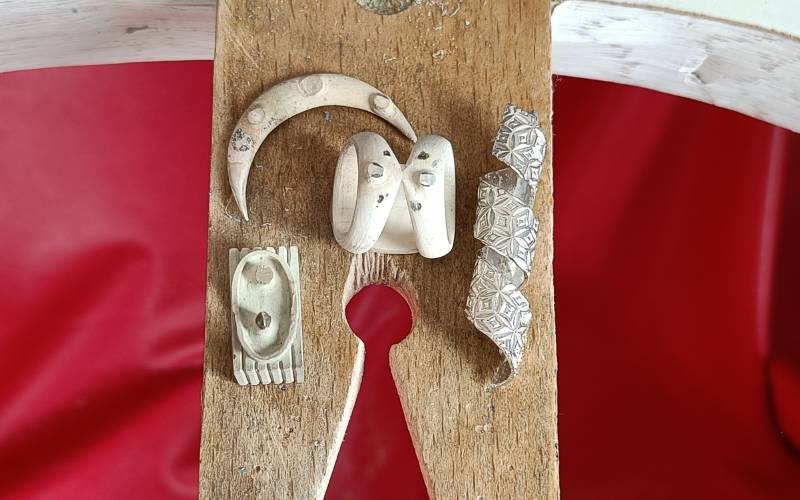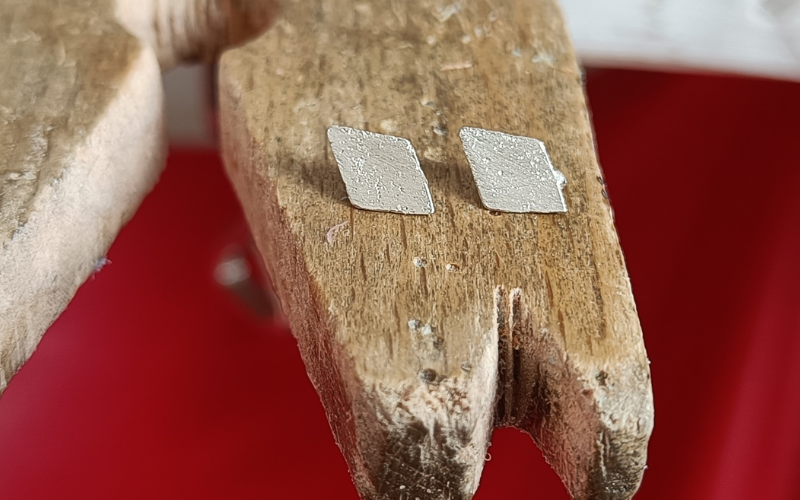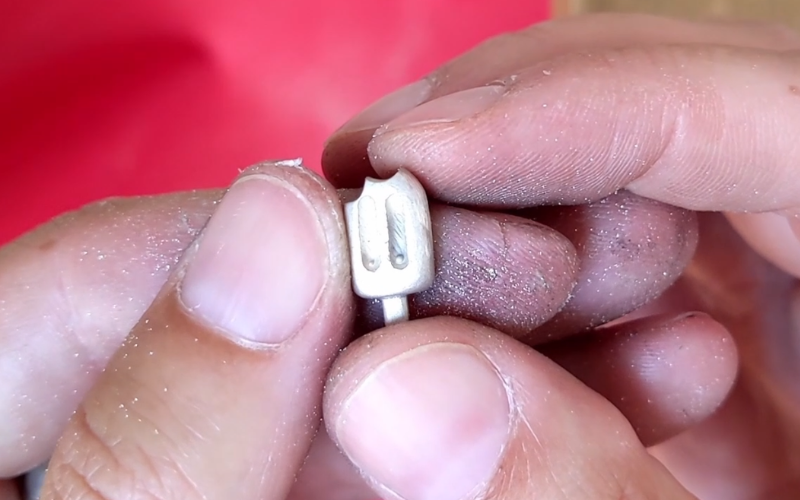Wax carving advent calendars?Wax carving advent calendars?
Why does this happen in casting?

Huge thank you to Alexandra of Jewels by ADFK who has a casting company in Germany for answering these questions!
Alexandra answered more casting questions in most asked casting questions and miscellaneous casting questions in case you want to know more!
Why do you get porosity?
In case you’ve been blessed with only perfect castings, you might not know what porosity is. Lucky you! Porosity are the little holes on the surface of your casting. Porosity holes can occur deeper in your piece as well, but you usually won’t know because you can’t see them.

If you’re lucky they’re very superficial, you can file and emery them out while cleaning up your casting. If you’re unlucky and it’s very deep, you’re better off soldering a piece of metal in the porosity hole. If you’re extremely unlucky and your piece is filled with deep porosity holes, you might consider remaking and recasting your piece.
Porosity happens when the inner wall of the investment becomes too hot in the casting process. It usually happens with thicker pieces: more metal goes into a thicker piece so the inner wall gets heated longer.
One way for casters to try and prevent porosity is to make different casting trees for thicker and thinner pieces. But a caster works with the pieces they get from makers, and when all the pieces are different there’s always going to be some variety on a casting tree.
Another way to try and counteract porosity is by heating the casting metal to the lowest temperature. That the metal is juuust liquid enough for it to be cast. This is easier to do with gold. Gold solidifies more gradually while silver has a definite temperature point that it solidifies again.
Silver is already more prone to have porosity compared to gold. It attracts gasses that can turn into porosity. It also loves to take up oxygen from the air every time it’s melted. So if you use silver that’s been melted a couple of times, there’s already porosity in the material! Silver grain used for casting should be de-gassed at a refinery to remove all the impurities.
And even with de-gassed silver grain. More precautions should be taken for a successful cast like vacuum casting or casting in an oxygen reduced environment.
Why do you get granules/air bubbles?
Have you ever gotten a piece back from casting with a little extra metal bubble on your piece? It looks like a mini granule.

They are caused by air bubbles in the investment!
When a caster mixes the investment powder with water, they obviously get some air bubbles in the mixed investment. That’s why once the investment is poured, the flask goes in a vacuum machine to draw the air bubbles out.
If this process goes perfectly your casts are clean. If some air bubbles get left behind you can end up with these little granules on your piece where an air bubble used to be.
It's not a big deal if this happens. The granules are easily filed away in the clean up process.
There are loads of different reasons air bubbles can be left behind in the investment. If the temperature of the investment mixture is wrong, it sets quicker trapping the air bubbles. If a flask is left in the vacuum machine for too short a time, it won’t get all the air bubbles out. The quality/brand of the investment powder also makes a big difference.
Why are some shapes easier to cast than others?
Have you ever received a casting where some of your details didn’t come out perfectly? Or the metal didn’t fill all the way until the edges of your piece? Or your piece cast perfectly, but the caster had to attach it with multiple sprues just to make sure it would cast all the way through?
All of these have happened to me at one point! It’s because some shapes and designs are easier to cast than others.
After the waxes have been burned out of a flask, a caster is left with all these connected empty spaces that need to be filled with liquid metal. The metal needs to flow through these empty spaces with the least amount of resistance to get all the separate pieces cast perfectly. So when a caster builds their casting tree, they arrange the waxes in a way that the metal can flow easily from the top where it gets poured, all the way to the bottom and the outside of the flask.
The same thing applies to your individual pieces. The metal needs to be able to flow through your entire piece with the least amount of resistance to get a successful cast. If you’re having trouble envisioning how the metal moves through your piece imagine a river. Where does the water flow easiest in a river? Does it flow easier around a gentle curve or a sharp 90° corner?
Because of the flow of metal, streamlined pieces are easier to cast since the metal can fill the entire space smoothly. Pieces with lots of outliers, sudden changes in thickness or direction are harder to cast because it’s more difficult for the metal to flow into the entire space. A plain court shaped ring is easier to cast than an intricately filigreed piece.
While the metal flows, it also cools down already. When it cools it starts to solidify, and it might not be able to reach all the empty spaces. Because of this, metal gets heated to a higher temperature for thin pieces than for thicker pieces. If you have a piece that’s a mix of real thick and real thin parts, you can end up with porosity on the thick parts (the inner wall of the investment gets heated more and longer), or the thin parts are not cast entirely (the metal cooled down before it could reach the thin part).
Same as with porosity, this is more a silver problem. Gold cools more gradually so it's easier for gold to reach all the spaces it has to.
Should I just make simple pieces?
Of course not! You should make all the complicated, fun and intricate pieces you want! But now you understand why some pieces end up with porosity and others end up with multiple sprues.
More questions?
If you have a different question about casting let me know! I'd love to write more blog posts about this topic!